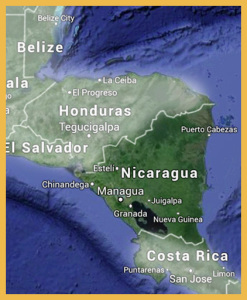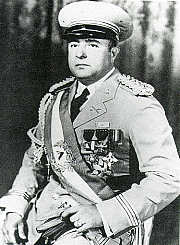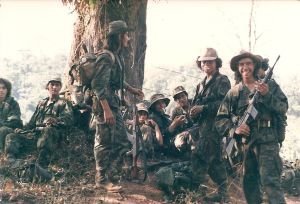United States History in Nicaragua
The U.S. and Nicaragua have been linked in history for over 150 years because of unique geography. Known as the country of volcanoes and lakes, Nicaragua was a major sea and land route between the Atlantic and Pacific Oceans for American business interests as early as the California Gold Rush.
 U.S. railroad mogul Cornelius Vanderbilt negotiated a sea and land route across Nicaragua during the gold rush, drastically reducing the amount of time needed to send supplies and prospectors by ship from the Atlantic to the Pacific.
U.S. railroad mogul Cornelius Vanderbilt negotiated a sea and land route across Nicaragua during the gold rush, drastically reducing the amount of time needed to send supplies and prospectors by ship from the Atlantic to the Pacific.
William Walker, called an “American adventurer” in the history books, invaded Nicaragua in 1856 with a small army and declared himself President, determined to create a pro-slavery state to strengthen the Confederacy. Walker’s reign lasted only a year. He was arrested and executed in Honduras.
At the turn of the 20th century political unrest in Nicaragua gave the U.S. an excuse to send in the Marines, who occupied Nicaragua for over 30 years. A Nicaraguan named Augusto Cesar Sandino organized an army to oust them and they waged guerrilla warfare for several years in the 1930’s until Sandino was lured into Managua to sign a truce and was assassinated. To keep the “peace,” a Nicaraguan named Anastasio Somoza Garcia, one of the few who spoke English, was put in charge by the U.S., establishing a family dynasty that ruled Nicaragua for 40 years until the Sandinistas ran his son, Anastasio Somoza Debayle, and his cronies out of the country in 1979.
 Somoza’s grip on power started crumbling after Nicaragua suffered a cataclysmic earthquake in 1972. The capital city, Managua, was the epicenter. The downtown was almost completely destroyed and more than 10,000 people were killed. International aid flooded into the country. Nicaraguans believe Somoza put most of it in his pocket or used it to expand his business interests. He was widely criticized and the assassination of his main critic, newspaper owner Pedro Joaquin Chamorro, sparked an uprising of the general population which was the beginning of a year-long, armed struggle.
Somoza’s grip on power started crumbling after Nicaragua suffered a cataclysmic earthquake in 1972. The capital city, Managua, was the epicenter. The downtown was almost completely destroyed and more than 10,000 people were killed. International aid flooded into the country. Nicaraguans believe Somoza put most of it in his pocket or used it to expand his business interests. He was widely criticized and the assassination of his main critic, newspaper owner Pedro Joaquin Chamorro, sparked an uprising of the general population which was the beginning of a year-long, armed struggle.
Somoza’s ouster was finally accomplished in July 1979 after more than 40,000 people paid with their lives. The U.S. tried to set up an interim government but the Sandinistas had clearly won the hearts and minds of the people. So the U.S. had to step back and watch as Cubans stepped in to help the Sandinistas learn how to consolidate popular support and convert it into a political force. The Cuban presence, coupled with President Reagan’s distaste for the Sandinistas leftist politics, resulted in the infamous Contra War, in which former National Guardsmen encamped in Honduras made raids deep into Nicaragua with the intention of destroying everything the Sandinistas had built – schools, clinics, coops, hydroelectric plants and roads. The Contra War, which lasted 10 years, was made possible by the U.S. government, whose agents trafficked in weapons and drugs to underwrite it.
The U.S. Congress declared an embargo, which was outlawed by the World Court in The Hague. After ten years of devastating conflict, Nicaraguans voted the Sandinistas out of power, knowing that U.S intervention would continue as long as the Sandinistas remained in office. They elected Violeta Chamorro, the matriarch of an old, anti-Somoza family. She was acceptable to the U.S. with her more conservative, pro-business stance and the contra war ceased, leaving much of the country’s infrastructure in ruins and tens of thousands of people killed, maimed for life, and dislocated.
Now that a Chinese company has signed a contract with the Nicaraguan government to build an alternative canal in Nicaragua, the U.S. is once again paying close attention to Nicaragua. The House Sub-Committee on Hemispheric Affairs has threatened to withdraw U.S. aid since Ortega’s re-election to a third term, after a judicial removal of a Nicaraguan Constitutional impediment to serving more than two consecutive terms and the uncertainty that action has raised about Nicaragua’s political future.
